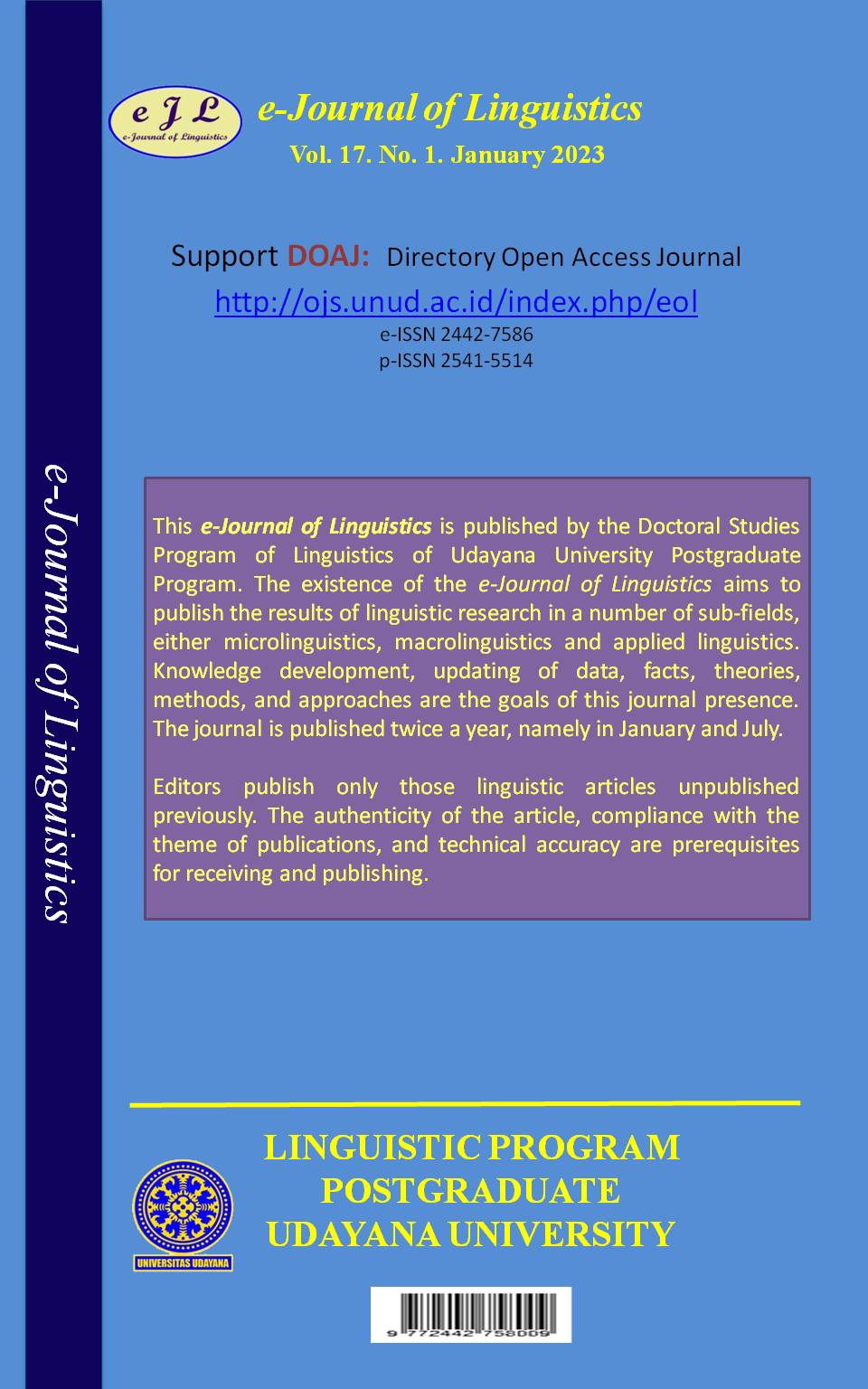Homonymy in "It Ends with Us" Novel by Colleen Hoover
Abstract
This study aims to analyze homonymy found in colleen hoover's novel it ends with us. the method that used in this study is qualitative research, which is the writer investigate phenomena in the natural contexts, attempting to make sense of or interpret phenomena in terms of the meanings that people assign to them. the data was taken from the source of data, which is from colleen hoover's novel, it ends with us. the result of this study is the writers found that there are 3 types homonyms, which is consist of 2 pairs of absolute homonym, 2 pairs of homograph, and 3 pairs of homophone in colleen hoover's novel it ends with us, and the dominant types of homonymy in colleen hoover's novel "it ends with us" is homograph.
Downloads
References
Astri, A., & Adha, R. (2020). Students’Ability in Understanding Homophone in English. Journal Of Linguistics, Literature & Language Teaching, 6(1), 31-54.
Aspers, P., & Corte, U. (2019). What is Qualitative in Qualitatuve Research ?. Qualitative Sociology.
Haber, J. and Poesio, M., 2021. Patterns of Lexical Ambiguity in Contextualized Language Models. Findings of the Association for Computational Linguistics, 2666. Available at: http://{j.haber|m.poesio}@qmul.ac.uk.
Hoover, Colleen. (2016). It Ends with Us. New York: Atria Paperback.
Humay Gızı, B., 2019. On The Investıgatıon of Homonyms From the Structural-Semantıc Poınt of Vıew in Englısh. Advances in Social Sciences Research Journal, 6(5), 366-367.
Jacobson, J., Lapp, D., & Flood, J. (2017). A Seven-Step Instructional Plan for Teaching English-Language Learners to Comprehend and Use Homonyms, Homophones, and Homographs. Journal of Adolescent & Adult Literacy, 5(2), 98-110.
Mamedova, Madina. (2019). Classification
of Homonymys of the English Languages. European Journal of Research and Reflection in Educational Science 7(12). 1-5.
Siti Sulistyaningsih, L., & Sitaresmi, N. (2020). A Comparative Study of Indonesian and Sundanese Homonym Vocabularies. 4Th International Conference On Language, Literature, Culture, And Education (, 509, 398-395.
Tabanakova, V. D. (2021). Term “Homonymy” As A Semantic Category. In O. Kolmakova, O. Boginskaya, & S. Grichin (Eds.), Language and Technology in the Interdisciplinary Paradigm, 18(1), 197-205.

This work is licensed under a Creative Commons Attribution 4.0 International License











